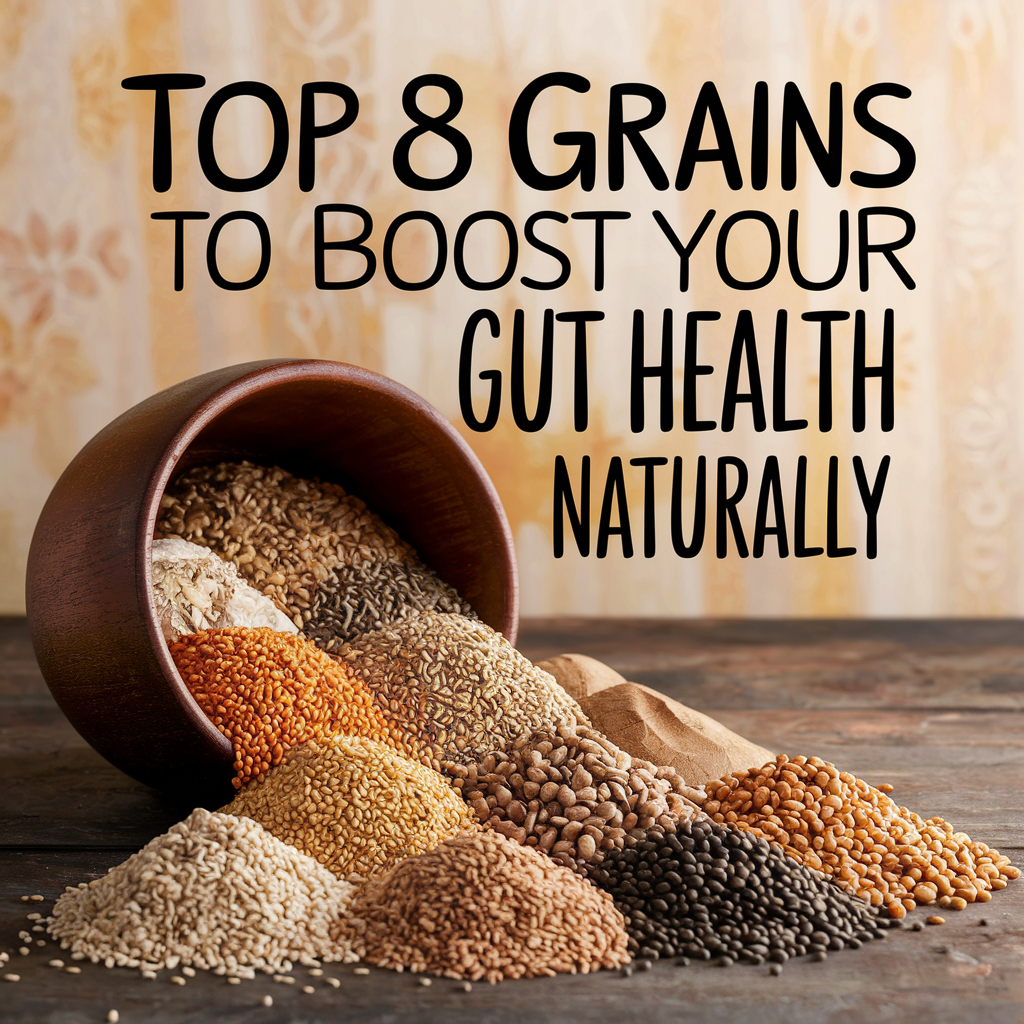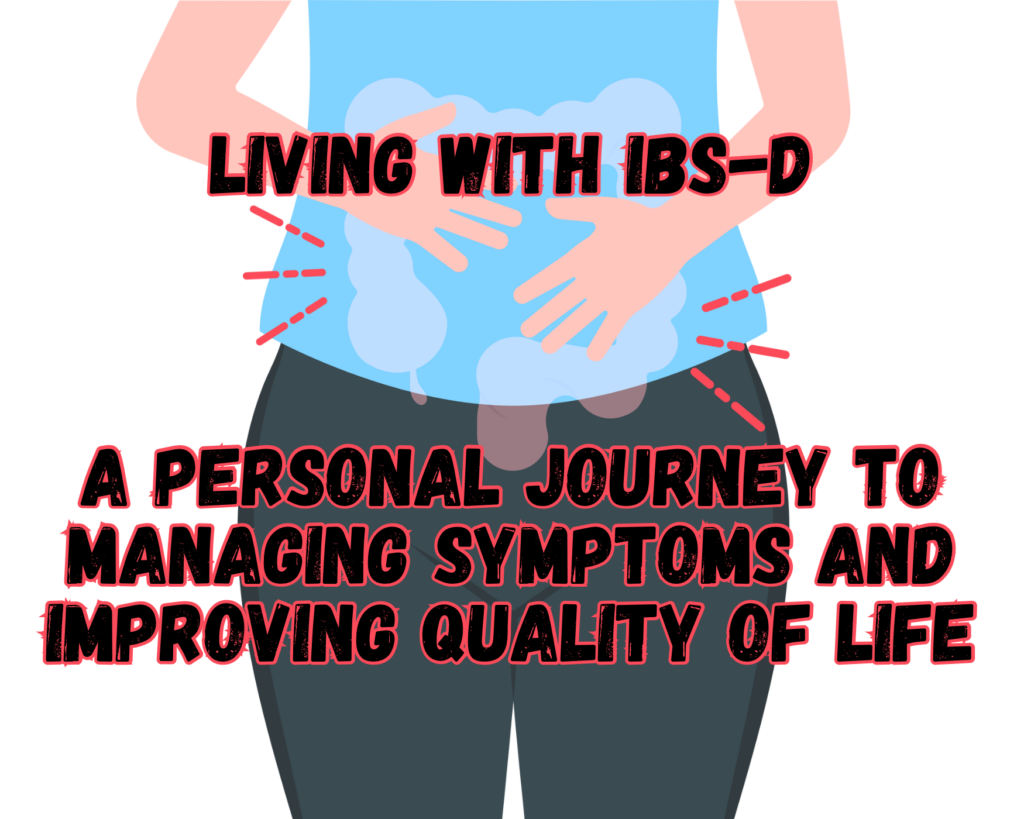
Why I started paying attention to the best grains for gut health
For a long time, I thought grains were just filler food. Bread, rice, crackers—things you toss on the plate without really thinking about it. But after dealing with years of bloating, irregular bathroom habits, and a gut that seemed constantly off balance, I started learning just how much grains can help—or hurt—your digestive health.
I’d heard about fiber being important for digestion, but I didn’t realize that not all grains are created equal. Some are loaded with gut-friendly fiber and nutrients that feed the good bacteria in your microbiome, while others are overly processed and actually slow things down. And once I started swapping out the bland stuff for real, whole grains that support gut health, I started noticing changes—less bloating, more regularity, and less of that sluggish, heavy feeling after meals.
If your gut has been feeling “off” too, this guide on unlocking the secrets to stomach health really helped me get a clearer picture of what was happening inside—and what foods could help reset everything.

What are the best grains for gut health?
Once I dove into the world of gut-friendly grains, I realized there are a ton of underrated options out there. We always hear about whole wheat, but there are so many other grains that do even more for your gut—some of them ancient, some of them super high in fiber, and all of them much easier on your stomach than white rice or highly processed breads.
Here are the grains that made the biggest difference for me:
1. Oats
A classic for a reason. Oats are rich in soluble fiber, especially beta-glucan, which helps feed your gut bacteria and keeps you full longer without upsetting your stomach.
2. Quinoa
It’s technically a seed, but cooks like a grain. It’s a complete protein and super easy to digest—plus, it’s naturally gluten-free and won’t weigh you down.
3. Buckwheat
Despite the name, it’s not wheat at all. Buckwheat is packed with resistant starch and fiber that supports a healthy microbiome. I add it to pancakes or bake it into granola.
4. Teff
This tiny ancient grain is high in fiber and iron. It’s used in traditional Ethiopian cooking and has a slightly nutty flavor. It helped me feel more balanced without bloating.
5. Farro
Nutty, chewy, and surprisingly filling, farro is an ancient grain that’s full of fiber and antioxidants. It became one of my go-tos for lunch bowls.
6. Freekeh
Made from roasted green wheat, freekeh is loaded with prebiotic fiber and actually helps reduce inflammation in the gut. It’s been used for centuries in Middle Eastern dishes.
7. Bulgur
A cracked wheat grain that cooks fast and is gentler than brown rice for me. Great in tabbouleh or tossed with veggies.
If you’re new to these grains, start with oats or quinoa—they’re the easiest on digestion and super versatile. And if your gut’s been off for a while, check out this article on how to get rid of that heavy feeling in your stomach. That sluggish bloated vibe often clears up once you start feeding your gut better grains.

How do high-fiber grains actually help with digestion?
Once I started eating more fiber-rich grains, things began moving better—literally. But I didn’t really get why at first. All I knew was that my stomach didn’t feel as backed up, I was more regular, and those random bloated days started happening less often. Turns out, the fiber in grains does a lot more than just keep things moving.
Here’s how high-fiber grains help your gut do its job:
- They bulk up your stool (in a good way)
Soluble fiber absorbs water and forms a gel-like texture that softens stool, while insoluble fiber adds bulk and helps waste move through your digestive tract more easily. - They feed your good gut bacteria
Certain fibers—like those found in oats, barley, and buckwheat—act as prebiotics. That means they fuel your healthy gut bacteria, helping them grow and thrive. - They help regulate bowel movements
Whether you’re dealing with constipation or diarrhea, fiber helps bring your system back to center. It makes things more predictable—which my anxious stomach really appreciated. - They can reduce gut inflammation
A high-fiber diet, especially from whole grains, has been shown to lower inflammation markers in the gut and improve overall gut barrier function.
Once I started getting fiber from whole food sources, like the grains we just talked about—not just powders or supplements—I noticed my gut actually started feeling normal again. If you deal with both constipation and diarrhea swings, this article on balancing IBS-M symptoms helped me understand how fiber fits into that balance without making things worse.
Fiber doesn’t just push stuff through—it actually supports the entire digestive ecosystem. And grains are one of the easiest (and tastiest) ways to get more of it.

Are ancient grains better for your gut?
When I first heard the term ancient grains, I pictured something trendy and overpriced at a health food store. But once I started learning more—and actually trying them—I realized these grains have stood the test of time for a reason.
Ancient grains like teff, farro, millet, freekeh, and amaranth haven’t been modified or stripped down the way modern grains have. That means they’re often higher in fiber, richer in nutrients, and gentler on digestion.
Why ancient grains may be better for your gut:
- Less processing = more natural fiber
Unlike refined grains, ancient grains still have their bran and germ intact, which means more prebiotic fiber for your gut bacteria to feed on. - Higher nutrient density
Many are packed with magnesium, iron, and antioxidants—all of which support your digestive health and reduce inflammation. - Gentler on sensitive stomachs
Because they’re less refined, ancient grains often digest slower and don’t spike blood sugar the way white bread or rice can. - More variety = better microbiome
Changing up the types of fiber you eat helps build diversity in your gut bacteria. Ancient grains add that variety easily.
When I added teff and farro into my weekly meals, I noticed fewer energy crashes and way less bloating after eating. And because these grains tend to be slower digesting, they gave me a nice steady feeling instead of that post-meal “ugh” slump.
If you’re someone who always feels off after eating certain grains—or you’re trying to repair your gut—ancient grains might be a great place to start. And if your gut issues also come with some of that “I always feel worse after I poop”kind of discomfort, this article might hit home: Why Your Stomach Feels Worse After a Bowel Movement. For me, improving my grain choices helped cut down on that irritated gut feeling big time.

Can whole grains promote a healthy microbiome?
This was the part I didn’t expect. I knew whole grains were better than white bread, but I didn’t realize they could actually help rebalance your gut bacteria. I always thought probiotics were the star of the show, but it turns out, whole grains play a huge role in feeding the good bugs already living inside you.
Your gut microbiome is basically a big party of trillions of microorganisms. And like any good party, they need food. That food? It’s called prebiotics—and whole grains are loaded with them.
Here’s how whole grains help your microbiome thrive:
- They feed the right kind of bacteria
Whole grains contain fermentable fibers that your body can’t digest—but your gut bacteria can. They turn that fiber into short-chain fatty acids (SCFAs), which help reduce inflammation and support gut lining health. - They boost microbial diversity
A more diverse microbiome is linked to better digestion, less bloating, and even improved mood. Eating a variety of whole grains helps make that happen. - They help crowd out the bad stuff
When you regularly feed the beneficial bacteria, they take over—leaving less room for harmful strains that can cause issues like gas, diarrhea, and inflammation. - They improve bowel regularity
A happy microbiome = more predictable bathroom visits. I went from never knowing what my gut was going to doto a much more normal rhythm.
If your stomach feels out of balance lately, adding in a few of the high-fiber grains we talked about earlier can help your gut bacteria thrive again. And if you’re also dealing with that annoying cycle of constipation one day and urgency the next, this guide on managing IBS symptoms helped me understand what was really going on and how fiber from grains played into fixing it.
Your gut bacteria don’t need fancy supplements—they just want real food. And whole grains? They’re one of the easiest and most effective places to start.

Which grains are easiest to digest?
If your gut is sensitive (like mine is), you probably already know that not all grains sit well. Some can leave you feeling heavy, bloated, or straight-up uncomfortable. So while fiber is important, it’s just as important to choose grains your gut can actually handle.
When I was trying to heal my digestion, I tested a bunch of options. Some were a hard no (looking at you, dense whole wheat bread). Others? Total game-changers.
My go-to easy-to-digest grains:
- Oats
They’re soothing, gentle, and rich in soluble fiber. I started having oatmeal with banana in the mornings and felt way more settled. - White rice (yes, really)
When my gut was flaring, brown rice was too rough. White rice might not be as high in fiber, but it’s very easy to break down and helped calm things down. - Quinoa
Gluten-free, light, and still packed with nutrients. I found it easier on my stomach than other whole grains, especially in small portions. - Buckwheat
Despite the name, it’s gluten-free and super gentle. I use it in pancakes and porridge when I want something filling but mild. - Millet
Soft, versatile, and non-irritating. I started using it like couscous or rice, and it didn’t mess with my stomach at all.
If your gut is unpredictable or inflamed, sometimes starting with these softer options helps your body adjust before jumping into high-fiber grains like freekeh or farro. And if your constipation tends to turn into cramping or urgency later, this article on what helps when you’re constipated and nothing is working walks through exactly what helped me reset without hurting my gut in the process.
Your digestive system is always talking—you just have to listen. For me, the right grains were a gentle way to tell my gut, “Hey, you’re safe now.” And it finally started acting like it.

How to incorporate gut-friendly grains into your daily routine
Once I found the grains my gut actually liked, the next question was: how do I make them part of real life without turning into a full-time quinoa chef? I didn’t want to totally overhaul my diet—I just wanted to eat in a way that made my stomach stop hating me.
Turns out, it’s not hard once you find a few easy ways to slip these grains into your day.
Easy ways I added gut-friendly grains to my routine:
- Oatmeal for breakfast
I started doing warm oats with a splash of almond milk, banana slices, and chia seeds. It’s filling, easy to digest, and keeps me regular without any mid-morning gut drama. - Quinoa in place of rice or pasta
It cooks fast and goes with almost anything—chicken, roasted veggies, soups. I even throw it into burrito bowls or cold salads. - Farro or bulgur in lunch bowls
I mix them with spinach, chickpeas, olive oil, and a bit of feta. It’s fiber-packed but still light enough not to leave me bloated for hours. - Ancient grain pancakes
Swapping all-purpose flour for buckwheat or teff flour was a game-changer. The texture’s still great, and it’s easier on the belly. - Snack swaps
I started keeping things like homemade oat bars or millet crackers around instead of chips or processed snacks. My gut felt way less sluggish after those mid-afternoon snacks. - Double batch + freeze
Grains like quinoa, buckwheat, or farro freeze well. I make extra and freeze them in small portions, so I can grab-and-go anytime during the week.
And if you’re already dealing with inconsistent bathroom visits, these grain habits paired really well with my use of Amazon Basic Care Stool Softener. Keeping things soft and predictable helped my gut stay happy, even when trying new foods.
Start small. Pick one grain, find one recipe, and just build from there. Your gut won’t fix itself overnight—but when you feed it right, it absolutely starts to feel like it’s on your side again.

What finally worked for me when I focused on the best grains for gut health
After years of struggling with everything from bloating and constipation to random bouts of urgency, I finally realized my gut wasn’t just being “weird”—it was asking for better fuel. When I swapped out processed carbs and started working real grains into my day, my digestion actually started working with me instead of against me.
Here’s what changed my gut for the better:
- Oats in the morning calmed everything down
My stomach stopped feeling chaotic before noon. No more “emergency bathroom runs” right after breakfast. - Quinoa replaced rice, and my gut thanked me
I felt full but not heavy, and it didn’t leave me bloated the way rice or pasta sometimes did. - Rotating different grains helped my microbiome
I stopped eating the same thing every day and gave my gut more variety. My digestion became predictable again. - I listened to what worked for me—not just trends
Some people love brown rice, but it never sat right with me. When I stopped forcing “healthy” foods that didn’t agree with me, my gut stopped fighting back.
If your gut has been off lately, if you’re constantly dealing with bathroom issues, or if you just want to feel lighter and more regular—don’t underestimate what a few simple grain swaps can do.
And if you’re stuck in that “why does my stomach feel awful even after I poop?” cycle, this article about what’s really happening post-bowel movement hit way too close to home—and helped me make sense of the final puzzle piece.
In the end, the best grains for gut health were the ones my body could actually digest, absorb, and benefit from without punishment. Once I gave my gut the right stuff, it finally gave me the peace I’d been begging for.
As an Amazon Associate we earn from qualifying purchases through some links in our articles.



